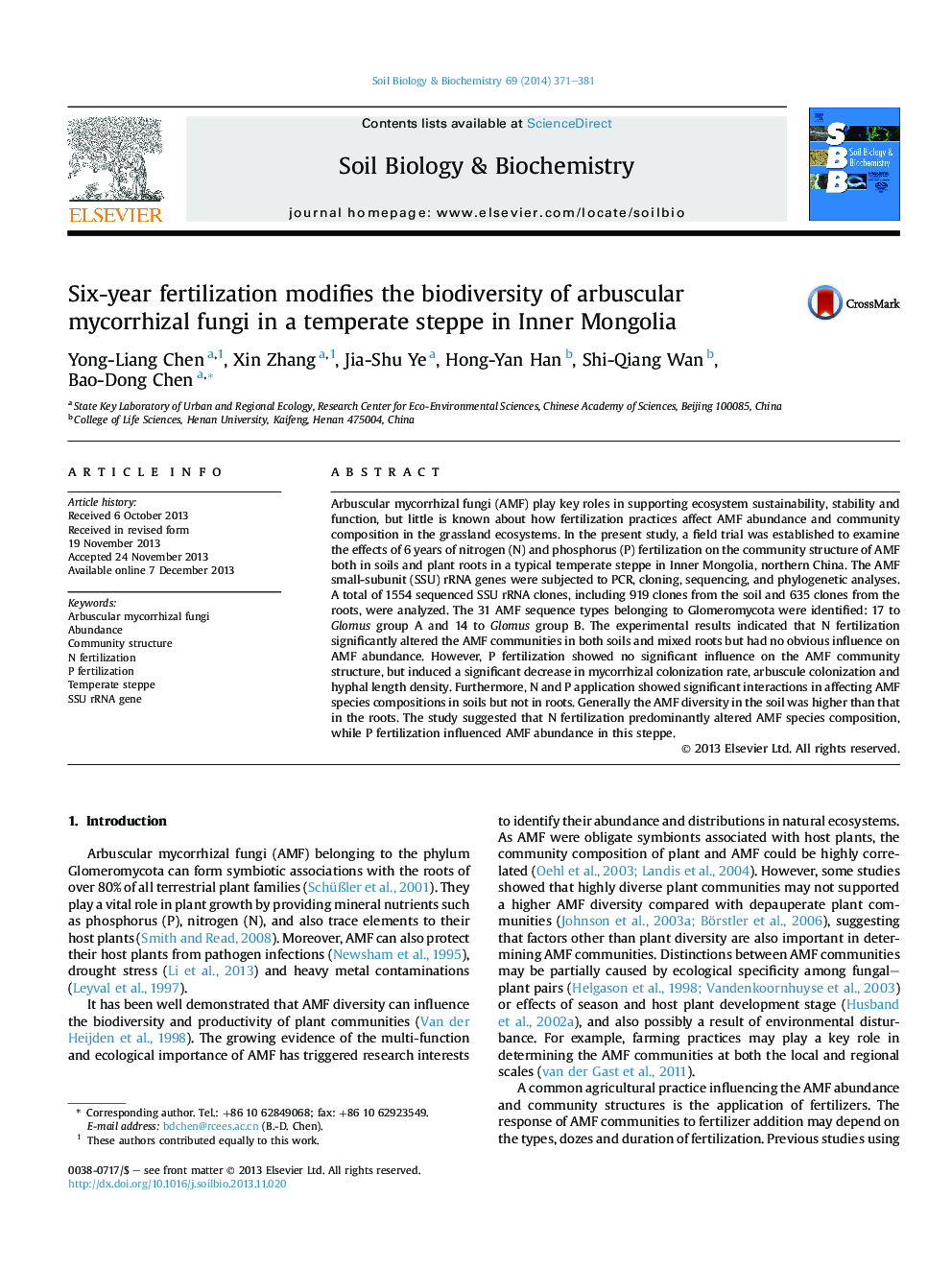| Article ID | Journal | Published Year | Pages | File Type |
|---|---|---|---|---|
| 2024747 | Soil Biology and Biochemistry | 2014 | 11 Pages |
Abstract
Arbuscular mycorrhizal fungi (AMF) play key roles in supporting ecosystem sustainability, stability and function, but little is known about how fertilization practices affect AMF abundance and community composition in the grassland ecosystems. In the present study, a field trial was established to examine the effects of 6 years of nitrogen (N) and phosphorus (P) fertilization on the community structure of AMF both in soils and plant roots in a typical temperate steppe in Inner Mongolia, northern China. The AMF small-subunit (SSU) rRNA genes were subjected to PCR, cloning, sequencing, and phylogenetic analyses. A total of 1554 sequenced SSU rRNA clones, including 919 clones from the soil and 635 clones from the roots, were analyzed. The 31 AMF sequence types belonging to Glomeromycota were identified: 17 to Glomus group A and 14 to Glomus group B. The experimental results indicated that N fertilization significantly altered the AMF communities in both soils and mixed roots but had no obvious influence on AMF abundance. However, P fertilization showed no significant influence on the AMF community structure, but induced a significant decrease in mycorrhizal colonization rate, arbuscule colonization and hyphal length density. Furthermore, N and P application showed significant interactions in affecting AMF species compositions in soils but not in roots. Generally the AMF diversity in the soil was higher than that in the roots. The study suggested that N fertilization predominantly altered AMF species composition, while P fertilization influenced AMF abundance in this steppe.
Keywords
Related Topics
Life Sciences
Agricultural and Biological Sciences
Soil Science
Authors
Yong-Liang Chen, Xin Zhang, Jia-Shu Ye, Hong-Yan Han, Shi-Qiang Wan, Bao-Dong Chen,
